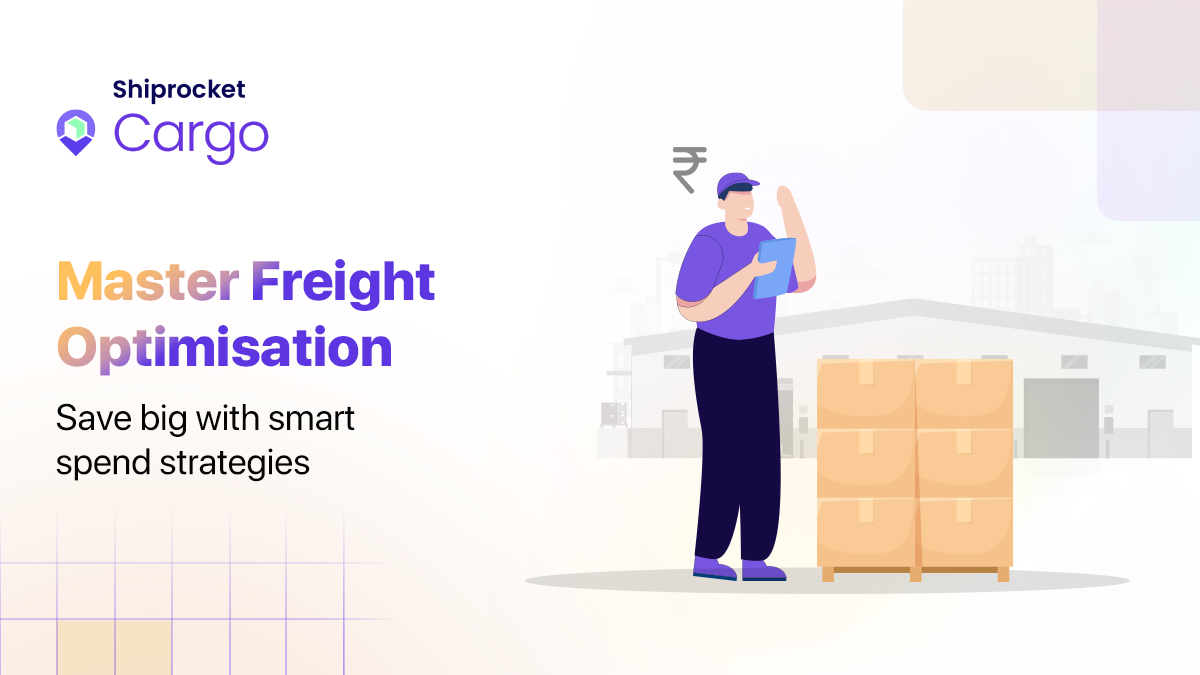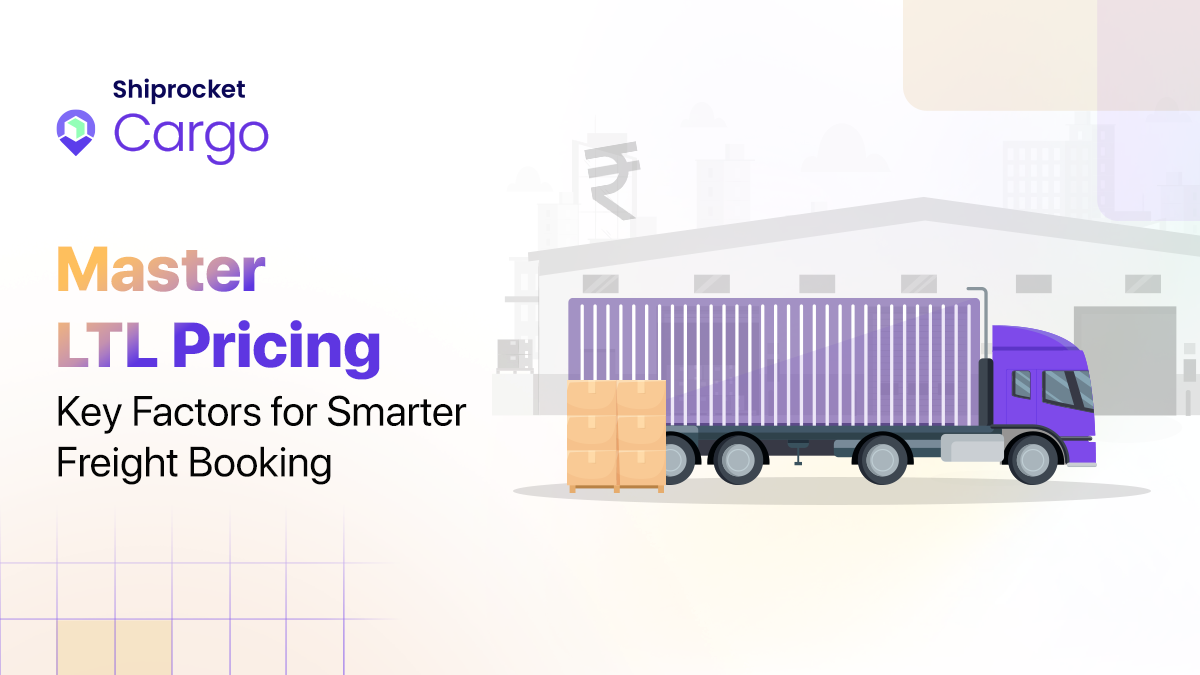What is a Tariff in Global Trade: Uses, Types, and Who Bears the Cost
In global trade, many things can affect your business, and tariffs are one of the biggest factors. Ever wondered why prices change when you sell your products to other countries? It could be because of tariffs.
Recently, the U.S. changed its trade rules. It imposed a blanket 25% additional tariff on goods from Mexico and Canada, and at the same time, it increased the tariff on all Chinese imports by an additional 10%. These changes have also impacted India, with the U.S. imposing “reciprocal tariffs” on some Indian goods.
As a seller, it’s essential to keep track of these changes. They can affect your prices and costs. Understanding tariffs will help you make better choices for your business. Let’s now look at some key concepts, like what is a tariff and why they are put in place.
What are Tariffs?
A tariff is a tax on goods that come from another country. It’s added at the border before the items enter your country. This makes imported products more expensive. Governments use tariffs to protect local businesses. If foreign goods cost more, customers are likelier to buy from local sellers like you.
Tariffs can also help raise money for the government. Customs collects the tariff before releasing the goods. Without paying it, your shipment will not move forward. If you use parts or materials from other countries, tariffs can increase costs, even if you don’t import ready-made products.
Let’s say you import 100 ceramic mugs from another country. Each mug costs ₹100. If there’s a 10% tariff, you’ll have to pay ₹10 extra per mug. So, instead of ₹10,000 for the shipment, you now pay ₹11,000. This extra cost could make your mugs more expensive for customers. That’s how a tariff directly affects your pricing and profit.
Some countries enter into trade agreements to lower tariffs. These deals help reduce sellers’ costs and smooth trade. For instance, India is part of several trade agreements that reduce or remove tariffs on goods traded between member countries.
Reasons Behind Tariff Implementation
Governments use tariffs for several reasons, and it’s crucial for you to understand them as a seller. Here are the key reasons:
- Protecting Domestic Employment
Governments use tariffs to protect jobs in their own country. For example, in 2025, the U.S. added a 25% tariff on steel and aluminium from other countries. This was done to help U.S. steel companies compete with cheaper foreign steel.
- Helping New Industries
In some countries, tariffs are used to help new industries grow. Countries like India and Brazil use tariffs to protect their businesses from cheaper foreign products. This gives local companies a chance to grow without being beaten by imports.
- Raising Government Revenue
Tariffs can be used to generate money for the government. For example, the U.S. collected billions of dollars in customs duties, with USD 78.8 billion in 2020 and USD 57.05 billion in FY 2025 as of 31st March. This money goes into funding government programs. As a seller, these tariffs affect how much you pay to import goods or how much your customers pay.
- Retaliation and Trade Disputes
Sometimes, countries use tariffs to get back at another country for unfair trade practices. In 2019, France added tariffs on U.S. goods because of a disagreement about using the name “Champagne.” These tariffs were used to pressure the U.S. to fix the issue.
- Protecting National Security
Tariffs are also used to protect important industries related to national security. For example, the U.S. places tariffs on steel to ensure they don’t depend on foreign countries for defence materials.
- Protecting Consumers
Governments may use tariffs to keep unsafe products out of the country. For example, if your products are safe and high-quality, tariffs on lower-quality imports can make your goods more attractive to customers.
What are the Common Types of Tariffs
Understanding tariffs is important to manage international trade costs. Below are the main types:
- Specific Tariffs: These are fixed fees applied to each unit of an imported product, no matter the product’s value. The tariff stays the same per unit, making it easy to calculate for sellers.
- Ad Valorem Tariffs: These tariffs are calculated based on the value of the imported product. The tariff is a percentage of the product’s value, so higher-priced products face higher tariffs.
- Compound Tariffs: These combine both specific and ad valorem tariffs. A compound tariff applies a fixed fee per unit and a percentage of the product’s value, increasing the total cost of the goods.
- Revenue Tariffs: These tariffs are mainly used to raise money for the government. They are not meant to protect local businesses but to generate revenue for public programs.
- Protectionist Tariffs: It is designed to shield local industries from foreign competition. They make imported goods more expensive, encouraging people to buy locally made products.
- Import Tariffs: These are taxes applied to goods coming into the country. Import tariffs are the most common and directly affect the price of foreign goods.
- Export Tariffs: These tariffs are placed on goods leaving the country. While not as common as import tariffs, they can be used to control the flow of goods out of the country.
- Transit Duties: These taxes apply to goods passing through a country to another destination. Transit duties don’t apply to goods imported or exported, but are still a part of trade regulation.
Who Ultimately Bears the Burden of Tariffs
Tariffs are not paid by the exporting country. Instead, the importer, often your business, bears the cost when bringing goods into the country. This raises the overall price of products in your market.
If you rely on imports, you will face higher costs. This could lead to higher prices and fewer customers. You could also try finding suppliers who don’t have tariffs to keep costs low. Knowing how tariffs affect your costs helps you set better prices.
How the U.S. Government Implements and Enforces Tariffs
If you’re exporting goods to the U.S., you must understand how tariffs work there. The U.S. government has a system to decide and collect these tariffs. Congress creates the rules. It can also let the President set or change tariff rates. The President takes action based on trade laws. But courts can intervene if something seems unfair or goes beyond the rules.
The U.S. Trade Representative helps the President with tariff decisions. The base system for collecting tariffs was set by the Tariff Act of 1789. Tariffs collected go to the U.S. Treasury’s General Fund.
When your goods enter the U.S., Customs and Border Protection (CBP) collects the tariff. They use a system called the Harmonised Tariff Schedule (HTSUS). This classifies your product based on type and where it’s from. Tariffs are collected at 328 ports across the U.S.
Your U.S. buyer or importer must report the goods’ value, type, and quantity. CBP checks this info. If something is missing or wrong, there can be penalties. Under Section 592 of the Tariff Act of 1930, false reporting can lead to fines or criminal charges. If a business intentionally avoids tariffs, it can face serious legal action under the False Claims Act.
Some items are not taxed. If a U.S.-made product is sent out and returned without any changes, it may not face tariffs again. But if a product made using U.S. parts is finished outside and comes back, tariffs apply on the full value. The U.S. also uses reciprocal tariffs.
What are Reciprocal Tariffs?
In 2025, the U.S. imposed a 27% tariff on imports from India in response to India’s higher tariffs on U.S. goods. The U.S. called this a “reciprocal tariff.” Reciprocal tariffs are used when one country matches or responds to the tariffs set by another country. If one country places high import taxes on goods, the other country may reply with tariffs on goods from the first country. This is often done to create a balance or respond to unfair trade practices.
Managing Smart Freight Solutions by Shiprocket Cargo
If shipping is a major part of your business, choosing the right courier, tracking packages, and ensuring timely deliveries are essential. Shiprocket Cargo can make this process simple and stress-free. It’s a platform where you can do everything from booking to delivery. With just one service, you can reach over 24,000 pin codes across India, covering a huge area.
You can track shipments in real time and receive updates via SMS and email. Whether Full Truck Load (FTL), Partial Truck Load (PTL), or air cargo, there are options for all shipment sizes. The platform also allows you to schedule deliveries and integrates with systems like SAP and Navision for your convenience. Log in, add your shipment details, choose a courier, and you’re ready.
Conclusion
Tariffs can significantly impact your business, especially as trade policies change. The recent changes from the U.S. and India have made it clear how important it is to stay updated. As a seller, understanding these shifts allows you to plan your pricing better and avoid unexpected costs.
Knowing how tariffs work helps you manage your business more informedly. By staying aware of these updates, you’ll be better positioned to adjust quickly, make smarter decisions, and stay competitive in the global market.



